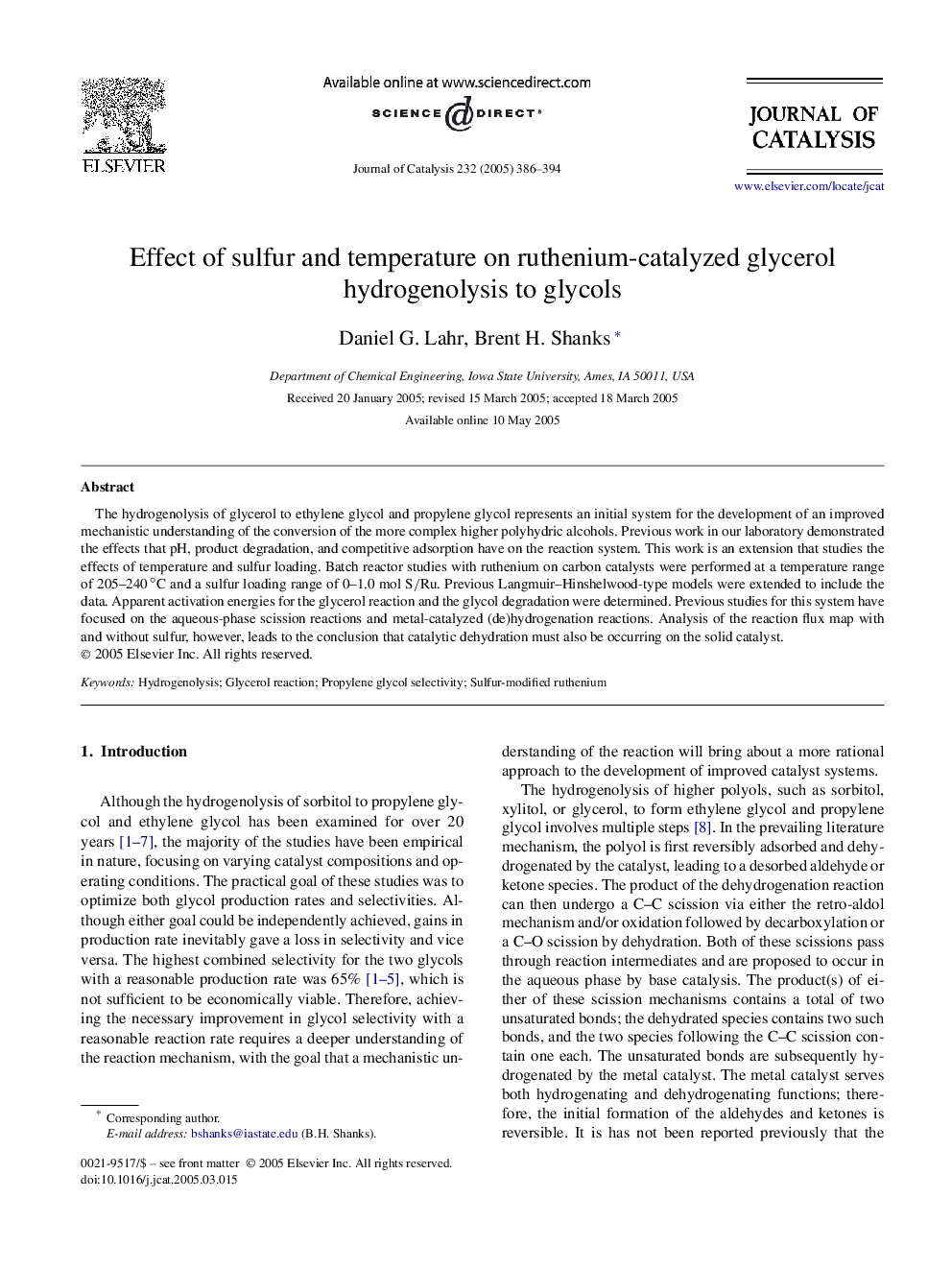| Article ID | Journal | Published Year | Pages | File Type |
|---|---|---|---|---|
| 10244415 | Journal of Catalysis | 2005 | 9 Pages |
Abstract
The hydrogenolysis of glycerol to ethylene glycol and propylene glycol represents an initial system for the development of an improved mechanistic understanding of the conversion of the more complex higher polyhydric alcohols. Previous work in our laboratory demonstrated the effects that pH, product degradation, and competitive adsorption have on the reaction system. This work is an extension that studies the effects of temperature and sulfur loading. Batch reactor studies with ruthenium on carbon catalysts were performed at a temperature range of 205-240â°C and a sulfur loading range of 0-1.0 mol S/Ru. Previous Langmuir-Hinshelwood-type models were extended to include the data. Apparent activation energies for the glycerol reaction and the glycol degradation were determined. Previous studies for this system have focused on the aqueous-phase scission reactions and metal-catalyzed (de)hydrogenation reactions. Analysis of the reaction flux map with and without sulfur, however, leads to the conclusion that catalytic dehydration must also be occurring on the solid catalyst.
Keywords
Related Topics
Physical Sciences and Engineering
Chemical Engineering
Catalysis
Authors
Daniel G. Lahr, Brent H. Shanks,
